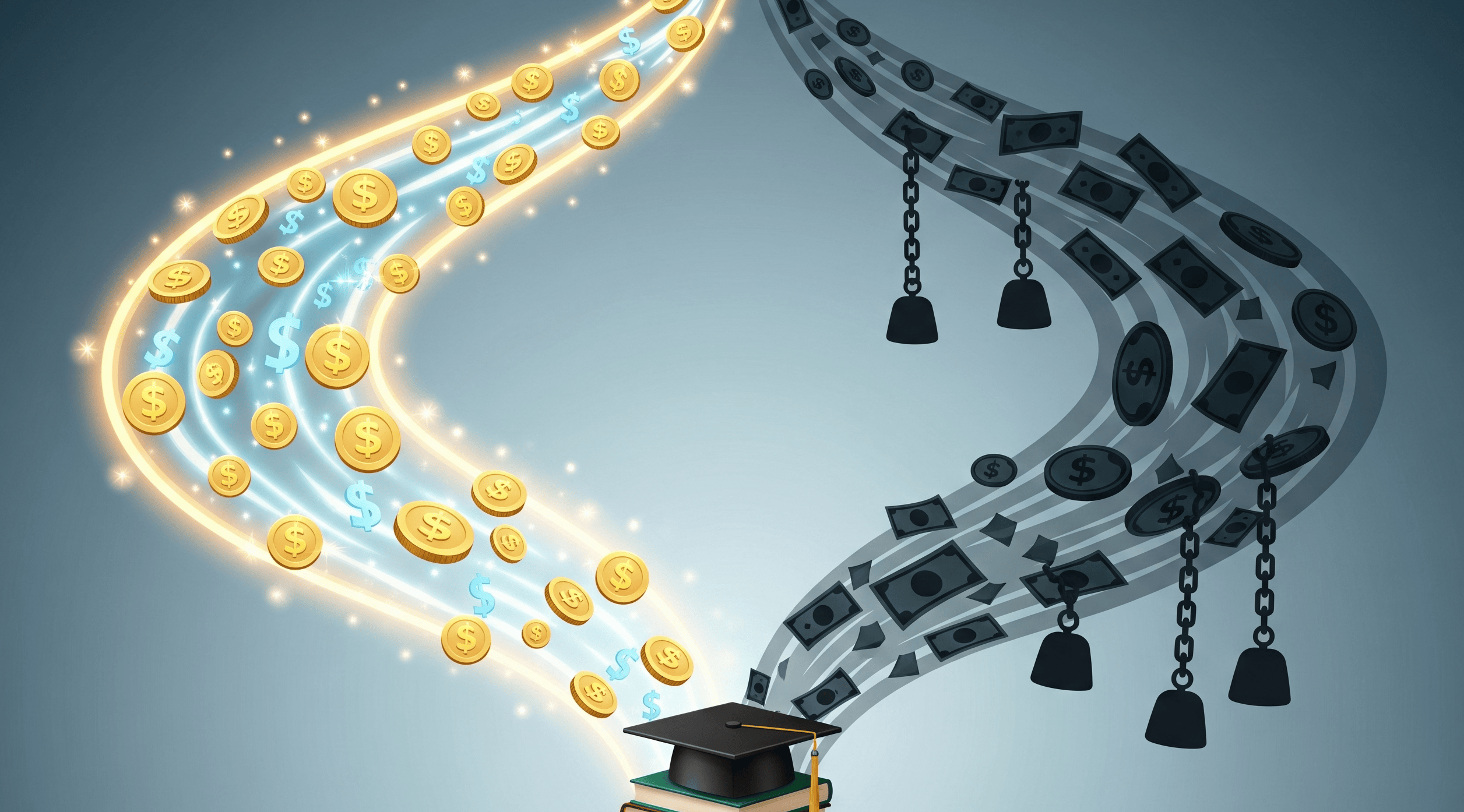Author: Vince Adriatico (Ex-banker with 750+ Credit Score)
Date: 6/17/2025
Table of Contents
- What Is a Subsidized Student Loan, and Why Does It Matter?
- Key Differences Between Subsidized and Unsubsidized Loans
- Policy Changes on the Horizon
- After School: How to Turn Repayment Into a Credit-Building Strategy
- What You Should Do Now
- The Bottom Line
Getting through college without drowning in debt is hard enough. Understanding your loan options-especially ones that save you money while you study, makes a big difference. Subsidized student loans help by covering your interest while you're in school, but they don't automatically set you up for success after graduation.
This article explains how subsidized loans work, what changes are coming in 2026, and how to think beyond graduation with a simple plan to build credit using Cheers Credit Builder. From FAFSA deadlines to rising interest rates to credit-building steps you can take now, here's how to stay in control of your finances before and after school.
What Is a Subsidized Student Loan, and Why Does It Matter?
A subsidized student loan is a federal loan awarded to undergraduates with demonstrated financial need. The Department of Education pays your interest while in school, during your grace period, and any approved deferment. This keeps your balance from growing while you focus on school.
That makes subsidized loans one of the most affordable student borrowing options if you qualify. They're offered through FAFSA, and funding is limited, so applying early is critical.
Key Differences Between Subsidized and Unsubsidized Loans
Not all federal loans work the same way. If you're offered both types, here's how they compare:
- Eligibility: Subsidized loans are only available to undergraduates with financial need. Unsubsidized loans are available to all undergraduate and graduate students regardless of financial need.
- Interest Coverage: With subsidized loans, the government pays your interest while in school, during your 6-month grace period, and deferment. With unsubsidized loans, interest begins accruing immediately.
- Loan Limits: Subsidized loans have lower annual and lifetime limits. Unsubsidized loans allow higher borrowing caps, especially for independent students and grad programs.
- Interest Rates (2025-2026): Subsidized and unsubsidized loans for undergrads carry a 6.39% fixed interest rate. For graduate students, unsubsidized loans carry a 7.94% rate.

Policy Changes on the Horizon
Proposed federal budget changes could eliminate subsidized loans starting in July 2026. These changes would push more students toward unsubsidized or private options that typically cost more and offer fewer protections.
At the same time, repayment structures are being reworked. Some proposals suggest replacing multiple income-driven repayment plans with a single "Repayment Assistance Plan" that could raise monthly payments for specific borrowers.
If you're entering college now or next year, this may be the final cycle to benefit from subsidized loans before changes take effect.
After School: How to Turn Repayment Into a Credit-Building Strategy
Subsidized loans help make school affordable, but they don't automatically build credit-especially if you're not actively repaying during school.
Once your grace period ends, your credit score can rise or fall based on how well you manage repayment. But here's a way to start building credit before repayment begins: Cheers Credit Builder.
Cheers helps you establish a positive payment history with all three credit bureaus. There's no credit check, no monthly fees-just small, consistent payments that get reported while your funds build up in a secure, FDIC-insured account. It's designed for starting, whether they have student loans or not.
What You Should Do Now
To make the most of your subsidized loan and your credit journey, here are a few steps to take right away:
- File FAFSA early. Funds for subsidized loans are limited and awarded on a first-come, first-served basis.
- Track upcoming policy changes. The loan options available today may not be here next year.
- Know your interest rates and loan limits. Don't borrow more than you need; always take subsidized loans before turning to unsubsidized ones.
- Start building credit on your terms. Use Cheers Credit Builder to get ahead while in school or during your grace period.
The Bottom Line
Subsidized student loans are a valuable tool, especially for students with financial needs, but they aren't a long-term credit solution. As soon as school ends, you'll need a plan that supports your credit health, not just your tuition bill.
Cheers Credit Builder makes that part simple. Whether you're still in school or just graduated, it gives you a head start on building credit without the burden of high fees or new debt.










